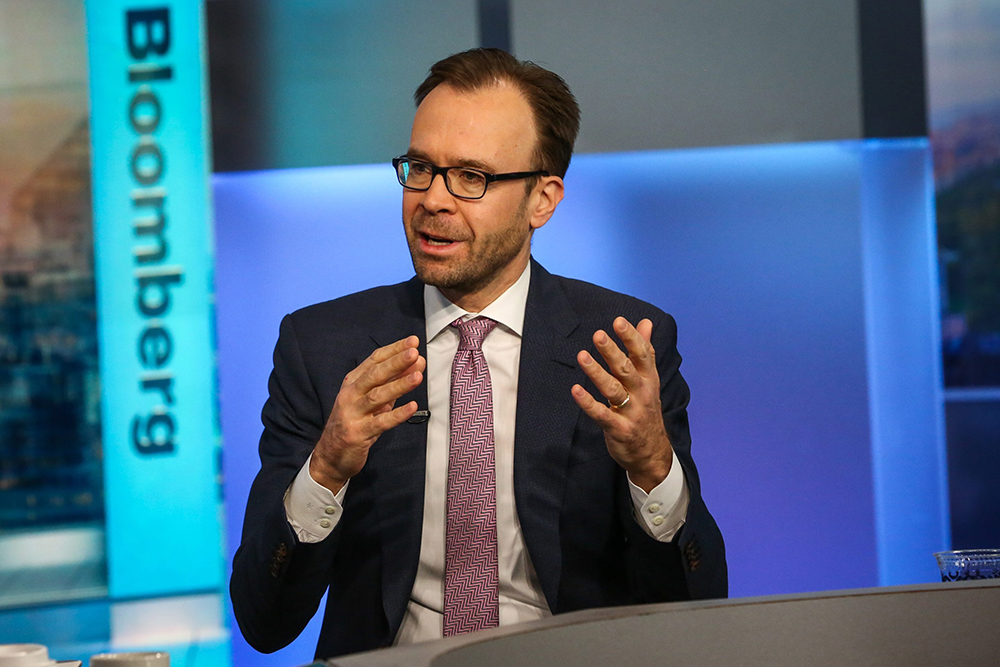
一些经济学家认为,2020年代的决策者和投资者们可以将1970年代作为参考模板。有人认为1990年代作为参照更合适,或者在牛市方面,可以选取“繁荣的”1920年代。
但高盛(Goldman Sachs)认为,应该彻底放弃这种策略,并专注于当下。
高盛首席经济学家贾恩·哈奇乌斯在高盛有关2024年经济前景的圆桌会议上表示,虽然历史能为现在提供有用的背景,但过去的路线图很少能直接套用到当前的情况。
哈奇乌斯在回答《财富》杂志的问题时表示:“进行历史模拟,说‘这与上世纪XX年代类似’,这种做法由来已久,[而且]几乎总是过于简单。因为正如有句名言说得好,历史从来不会重复,但有时候会‘押韵’。”
在2023年,专家们一直试图透过市场的历史表现,去理解各种经济因素。例如,德意志银行(Deutsche Bank)表示,由于地缘政治风险、通胀上涨和数次石油危机,美国正在重现1970年代的状况。
瑞银集团(UBS)预测的前景更加乐观,认为美国经济实际上正在重现上世纪90年代克林顿时期的繁荣。
在某些市场,例如专家们所说的房地产市场,正在重走1980年代的老路,而专家警告科技行业要警惕1990年代的教训。
但哈奇乌斯警告,不要将这种对比作为未来投资或制定经济策略的路线图。他表示:“虽然有些时期更有参考意义,但我并不认为任何一个时期[应该作为]完整的模板。”
欢迎回到1918年
高盛的前景展望总体上比许多华尔街同行更加乐观。
例如,当其他人预测明年发生经济衰退的概率约为50%的时候,高盛却坚持认为经济衰退的概率只有15%。
大盘科技股的强劲表现会使市场继续走强,而美联储最终降低基准利率,会进一步稳定市场。
在与媒体的电话会议上,哈奇乌斯和高盛首席美国股票投资策略师大卫·科斯汀表示,预计美联储明年会降息,其他主要国家的央行会跟进,采取类似措施。
因此,对于德意志银行的悲观预测,哈奇乌斯反驳称:“我并不认为1970年代是一个很好的模板,我们最反对将这个时期作为参照。现在与1970年代不同,当时有其他严重过热的通胀预期和失控的周期。”
哈奇乌斯还是高盛全球投资研究部门的负责人。他表示,如果一定要寻找参考,1910年代末可以带来一些有用的启发。
他解释说:“我认为有一些战后或疫情之后的混乱因素。你可以对比1918年的流感,其中有一些因素值得参考。1918年流感之后的那段时期存在的问题是,缺少高质量的经济数据,但我认为有一些因素值得参考。”
1918年的西班牙流感造成了2,000万至4,000万人死亡,超过了一战的死亡人数。
与新冠疫情类似,西班牙流感的传染性超过了之前出现的类似疾病,导致美国成年人的平均寿命缩短了10岁。
2020年对西班牙流感的一项研究估计,疫情至少使实际人均GDP减少了6%,个人消费减少了8%。
之后的1920年代,是社会文化充满活力和经济繁荣的一段时期。
然而,尽管哈奇乌斯承认两个时期之间存在相似性,但他表示:“我通常不会夸大将一个时期作为参考模板的程度。”(财富中文网)
译者:刘进龙
审校:汪皓
一些经济学家认为,2020年代的决策者和投资者们可以将1970年代作为参考模板。有人认为1990年代作为参照更合适,或者在牛市方面,可以选取“繁荣的”1920年代。
但高盛(Goldman Sachs)认为,应该彻底放弃这种策略,并专注于当下。
高盛首席经济学家贾恩·哈奇乌斯在高盛有关2024年经济前景的圆桌会议上表示,虽然历史能为现在提供有用的背景,但过去的路线图很少能直接套用到当前的情况。
哈奇乌斯在回答《财富》杂志的问题时表示:“进行历史模拟,说‘这与上世纪XX年代类似’,这种做法由来已久,[而且]几乎总是过于简单。因为正如有句名言说得好,历史从来不会重复,但有时候会‘押韵’。”
在2023年,专家们一直试图透过市场的历史表现,去理解各种经济因素。例如,德意志银行(Deutsche Bank)表示,由于地缘政治风险、通胀上涨和数次石油危机,美国正在重现1970年代的状况。
瑞银集团(UBS)预测的前景更加乐观,认为美国经济实际上正在重现上世纪90年代克林顿时期的繁荣。
在某些市场,例如专家们所说的房地产市场,正在重走1980年代的老路,而专家警告科技行业要警惕1990年代的教训。
但哈奇乌斯警告,不要将这种对比作为未来投资或制定经济策略的路线图。他表示:“虽然有些时期更有参考意义,但我并不认为任何一个时期[应该作为]完整的模板。”
欢迎回到1918年
高盛的前景展望总体上比许多华尔街同行更加乐观。
例如,当其他人预测明年发生经济衰退的概率约为50%的时候,高盛却坚持认为经济衰退的概率只有15%。
大盘科技股的强劲表现会使市场继续走强,而美联储最终降低基准利率,会进一步稳定市场。
在与媒体的电话会议上,哈奇乌斯和高盛首席美国股票投资策略师大卫·科斯汀表示,预计美联储明年会降息,其他主要国家的央行会跟进,采取类似措施。
因此,对于德意志银行的悲观预测,哈奇乌斯反驳称:“我并不认为1970年代是一个很好的模板,我们最反对将这个时期作为参照。现在与1970年代不同,当时有其他严重过热的通胀预期和失控的周期。”
哈奇乌斯还是高盛全球投资研究部门的负责人。他表示,如果一定要寻找参考,1910年代末可以带来一些有用的启发。
他解释说:“我认为有一些战后或疫情之后的混乱因素。你可以对比1918年的流感,其中有一些因素值得参考。1918年流感之后的那段时期存在的问题是,缺少高质量的经济数据,但我认为有一些因素值得参考。”
1918年的西班牙流感造成了2,000万至4,000万人死亡,超过了一战的死亡人数。
与新冠疫情类似,西班牙流感的传染性超过了之前出现的类似疾病,导致美国成年人的平均寿命缩短了10岁。
2020年对西班牙流感的一项研究估计,疫情至少使实际人均GDP减少了6%,个人消费减少了8%。
之后的1920年代,是社会文化充满活力和经济繁荣的一段时期。
然而,尽管哈奇乌斯承认两个时期之间存在相似性,但他表示:“我通常不会夸大将一个时期作为参考模板的程度。”(财富中文网)
译者:刘进龙
审校:汪皓
Some economists are convinced that the 1970s should act as a blueprint for how policymakers and investors should handle the 2020s. Others say the 1990s are more appropriate, or in a bull market even the “roaring” 1920s.
Goldman Sachs says it’s time to scrap the tactic altogether and focus on the here and now.
Speaking during a Goldman roundtable focussed on the outlook for 2024, the firm’s chief economist Jan Hatzius said that although history provides useful context for the present day it’s rarely a roadmap to be replicated.
Responding to a question from Fortune, Hatzius said: “Historical analogy and saying ‘This is just like the 19XX’ has a long history [and] is almost always too simple. The reason is that history never repeats, but in some cases it rhymes, as the saying goes.”
Throughout 2023 experts have attempted to understand a cocktail of economic factors through the lens of previous markets. Deutsche Bank, for example, said the U.S. is currently seeing a return to the 1970s on account of geopolitical risks, rising inflation and a number of oil shocks.
UBS has a far more positive outlook, saying the economy is actually headed back to a Clinton-like era of the bustling 1990s.
In specific markets, experts are saying housing, for example, is returning to the 1980s while the tech industry has been warned to mind the lessons of the 1990s.
However, Hatzius warned against using such comparisons as a roadmap for investment or economic strategies moving forward: “Some periods are more helpful than others but I don’t think any [should be used] as a full blueprint.”
Welcome to 1918
Overall, Goldman Sachs’s outlook is significantly more optimistic than many of its Wall Street peers.
For example, while the rest of the market is predicting a recession next year at around a 50% likelihood, Goldman is standing firm that it will be just 15%.
The market will continue to be strengthened by strong performances in mega-cap tech stocks, and further stability will be brought about by eventual cuts to the base rate by the Fed.
On the call with members of the media, Hatzius and colleague David Kostin—the firm’s chief U.S. equity strategist—said they expect the Fed to cut rates next year following similar moves by other major central banks.
As a result, Hatzius rejects the doom and gloom narrative proposed by Deutsche Bank, saying: “I certainly don’t think that the 1970s are a great blueprint, that’s probably the period we’ve been arguing against the most. This is not like the 1970s [with] other serious overheating inflation expectations, getting out of control cycles.”
Hatzius, who is also head of Global Investment Research at Goldman Sachs, said if anything a late 1910s era could hold some useful inspiration.
“I think there’s some elements of post-war dislocations or post-pandemic dislocations,” he explained. “You can go back to the 1918 flu, there are some elements there. The problem with the post-1918 flu period is that there’s very little high-quality economic data but I think there are some elements there.”
In 1918 the Spanish flu pandemic killed anywhere between 20 million and 40 million—resulting in more deaths than the number of people who died in World War One.
Similarly to COVID, Spanish flu was more contagious than previous similar diseases and resulted in the average lifespan of U.S. adults decreasing by 10 years.
A 2020 study of the Spanish flu estimated—as best it could—that the impact of the outbreak was a reduction in real per capita GDP of 6% and a fall in private consumption of 8%.
Following this came the 1920s—a period of great social and cultural dynamism and a booming economy.
However, despite recognizing the relevant similarities between the periods, Hatzius added: “I would generally not overstate the extent to which you can use one period as a blueprint.”






